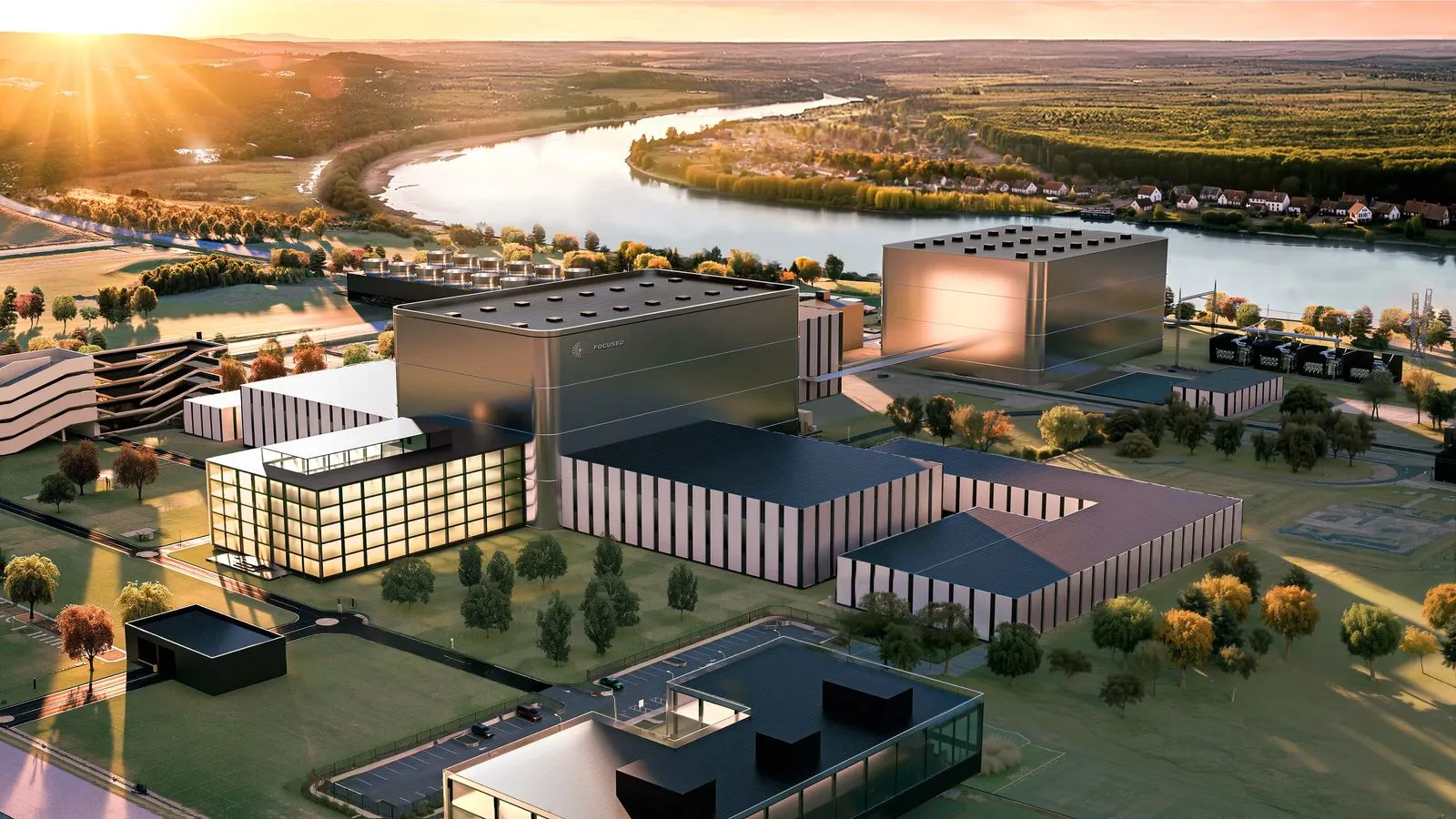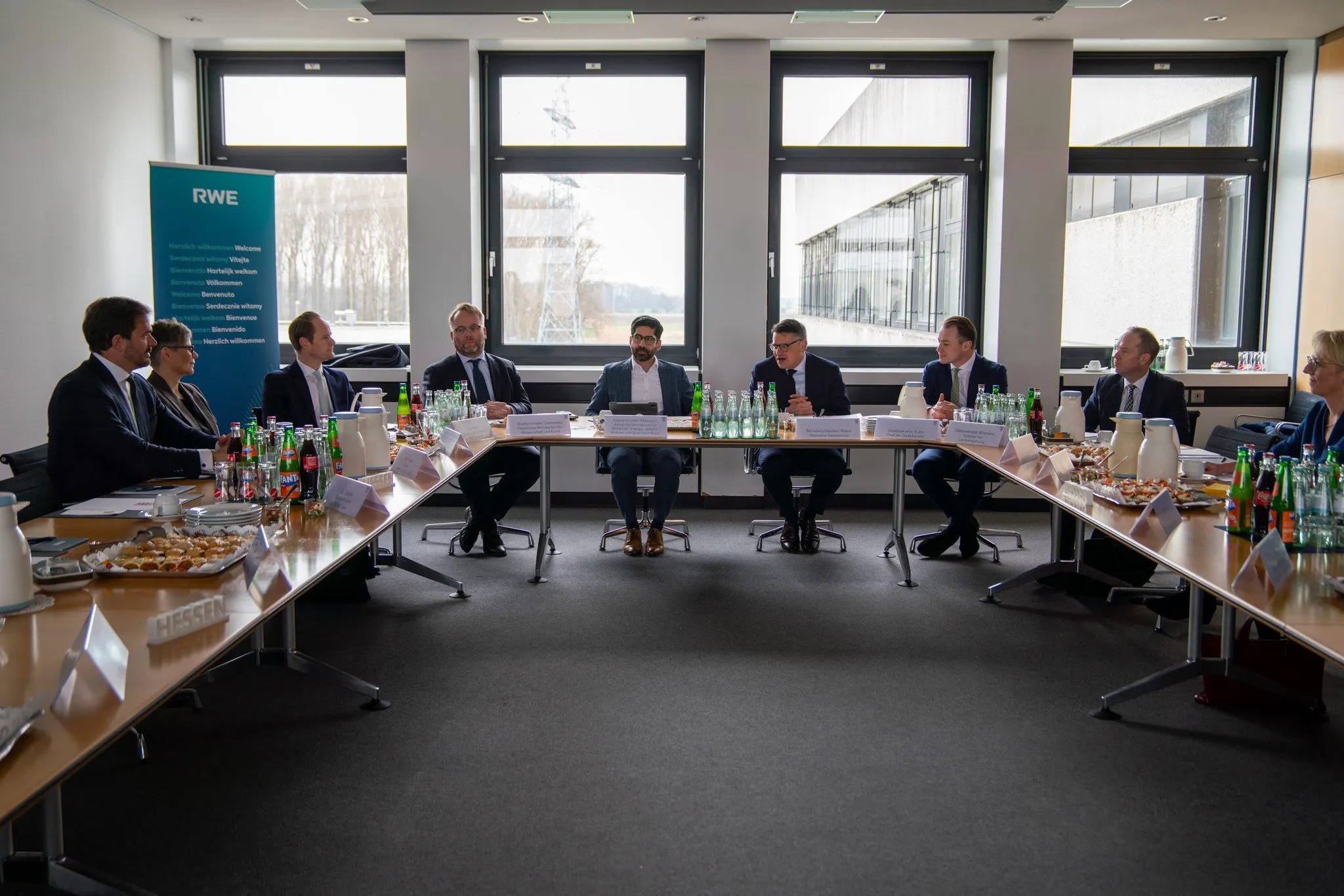Focused Energy signs MoU to build Germany's first fusion power plant at Biblis site
By Karl Tischler
On 13 March 2025, US-German fusion startup Focused Energy signed a memorandum of understanding (MoU) with energy utility RWE and the state of Hesse to develop a 1-gigawatt fusion power plant at the former Biblis nuclear site in Germany. The agreement marks the most ambitious commercial fusion energy project in Germany to date, backed by public and private sector partners.
So what have they done, and why is it significant?
 Artist’s rendering of the future Focused Energy facility © Focused Energy Inc
Artist’s rendering of the future Focused Energy facility © Focused Energy Inc
What have they done? – A public-private partnership to build a laser-based fusion plant
Focused Energy, RWE, and the state of Hesse have committed to collaborate on developing a commercial-scale fusion power plant at the Biblis site, previously home to a nuclear fission plant decommissioned after Germany’s 2011 nuclear phase-out. The partners aim to complete the project by 2035.
Hesse has pledged €20 million in initial research support, while RWE has offered to provide land, technical expertise and project management. The total cost of the project is expected to be in the range of €5 to €7 billion.
The project will be based on inertial fusion technology, specifically using solid-state lasers to initiate fusion reactions in fuel pellets—a method made more attractive in recent years by progress at the US National Ignition Facility and improvements in laser efficiency.
Thomas Forner, Co-founder and President of Focused Energy, told us: “This is a major milestone in our journey—the path to commercializing laser fusion has never been clearer or more promising.”
Forner summarised the key developments as follows:
- Germany has committed to being the first customer for a first of a kind fusion power plant.
- Focused Energy is launching an industry consortium to coordinate participation in an upcoming Request for Proposal from the German government.
- They are seeing strong and increasing support from the state government in Hessen.
- RWE has deepened their commitment to explore how to host a laser fusion plant at its decommissioning nuclear site at Biblis in cooperation with Focused Energy, investing in diligence and helping drive the consortium.
Why is it impressive? – A first for Germany and a leap for laser fusion
If successful, the plant would be Germany’s first fusion power plant and the first in the world to use laser-based fusion at grid scale.
The Biblis initiative represents a bold re-entry into the nuclear sector for Germany, which phased out nuclear power in 2023. The involvement of RWE, one of Europe’s largest utilities, adds commercial credibility and infrastructure strength to the project.
Focused Energy claims recent advancements have made their solid-state laser technology 30 times more efficient than earlier generations, reducing one of the main barriers to laser fusion’s viability.
 Under the leadership of Minister President of State Hesse, Boris Rhein, the participants of the "Laser Fusion and Industrial Eco System Roundtable" meet at the former nuclear power plant site in Biblis (Germany). © Staatskanzlei Hessen
Under the leadership of Minister President of State Hesse, Boris Rhein, the participants of the "Laser Fusion and Industrial Eco System Roundtable" meet at the former nuclear power plant site in Biblis (Germany). © Staatskanzlei Hessen
Why is it important? – Germany reclaims a stake in the global fusion race
While other countries have taken the lead in commercial fusion—notably the US with Commonwealth Fusion Systems and Helion Energy, and the UK with the STEP programme—Germany has so far remained on the sidelines. The Focused Energy announcement changes that.
The project reflects a shift in German policy following the election of a new conservative government in February 2025, which has expressed support for fusion as a pillar of the energy transition. It also aligns with broader European interest in accelerating fusion R&D and localising fusion supply chains.
Critically, the project is a test case for whether Europe can build credible, investor-backed fusion pilot plants on its own terms. Focused Energy’s approach contrasts with magnetic confinement paths like SPARC (CFS) or Proxima Fusion's stellarator strategy. Instead, it bets on the scalability of laser fusion, a path that had long been viewed as more suited to research labs than commercial power generation.
What’s next? – Feasibility, funding, and first steps toward fusion electricity
The MoU is only the beginning. The next phase will involve feasibility studies, technology development, regulatory engagement and securing additional private capital. Fusion technology is still years away from deployment, and laser fusion in particular faces major challenges—from precision targeting to repetition rate and tritium supply.
Nevertheless, the Biblis project sets a new benchmark for fusion ambition in Europe. It will be watched closely not just for its technical progress, but for how it mobilises partnerships, capital and public trust in a post-nuclear Germany.
